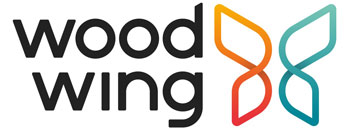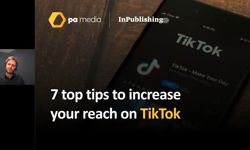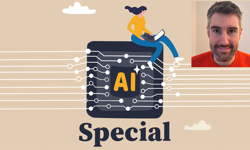
Digital transformation is a given
This article isn’t about convincing you to implement new technology in your business. It’s probably already high on your agenda. With burgeoning channels to keep up with – and increasing competition from free online content – publishers are all too aware of the challenges facing the sector. And the benefits of digital transformation are widely accepted and understood.
Many publishing businesses are considering digital transformation but, for the best results, you will need to change people and process too. Otherwise, you risk automating inefficient systems or perpetuating out-dated processes. But where do you start?
The PPT framework
The PPT framework is about how People, Process and Technology interact to deliver business objectives.
- People – Provide their expertise and energy to do the work
- Processes – Make this work efficient, replicable and scalable
- Technology – Uses automation to make processes and people more efficient
The framework recognises that businesses achieve maximum efficiency when all three are aligned. If you only focus on one element, failings in the other areas can limit your success.
This is certainly the case for digital transformation. There’s no doubt that new technology can transform how publishers deliver their work. Automation can free staff from now-unnecessary manual processes and give them more space for creative endeavours.
But without the right processes and people in place, publishers won’t be able to maximise this opportunity. That’s why we recommend businesses look holistically at their operations when they’re exploring software solutions.
It doesn’t have to be difficult
So what does this look like in practice? How can publishers use the PPT framework to support digital transformation, improve their productivity, and boost their bottom line?
It doesn’t have to be difficult. Just acknowledging the importance of all three elements is a great start. Here are three steps publishers of any size can take to build a firm foundation for digital transformation.
- Eyes on the prize: It’s easy to get caught up in the specific features of individual solutions. But don’t lose sight of the bigger picture. Are you aiming to increase your outputs, reduce overheads, grow your audience? Software should facilitate these goals, not be a goal in itself. Be aware of the tools that are available but don’t get hung up on any one product at this stage.
- Audit and assess: Next step is to audit your current circumstances. Document your processes and how long people spend on each task. Think about why you do things the way you do. Are they historic processes you’ve inherited and tweaked? Are they still fit for purpose? Are they efficient? Where are the bottlenecks? In an ideal scenario – or to meet your future objectives – how would they be different?
- Rebuild and transform: Once you’ve decided what your ideal processes should be, it’s time to see how people and technology can make them work. Don’t worry, we’re not talking about replacing all your staff with AI! It’s about realigning people’s time, skills and interests to optimise your new workflows.
Putting PPT in practice
We know the concepts above are a bit theoretical, so here’s some real-life (anonymised) examples of how WoodWing customers addressed the three elements of PPT to improve their performance.
People
Whilst considering new editorial workflow software, this magazine publisher decided to consolidate formerly separate roles into a more streamlined staff structure.
Instead of having separate print and online editors, they created a role responsible for editorial content for both channels. Then they made it manageable by providing workflow and automation tools that reduced manual work.
Plus, once they had a cloud-based system in place, they were also able to use more offshore and freelance suppliers, driving further efficiencies.
Processes
The publishing team at this fashion retailer used to be solely focused on creating flagship printed catalogs. With the dawn of ecommerce, they realised their former print-centric processes were no longer fit-for-purpose.
They redesigned processes to have a digital-first approach, to meet the changing priorities of the business, whilst maintaining a strong print presence. Then they applied software tools to make the processes more efficient and cost-effective.
Technology
This traditionally print-based publisher wanted to start creating and monetising content for digital channels. They couldn’t increase staff numbers, so they decided to automate processes instead. This eliminated time-consuming manual tasks and freed up staff to start creating content for new platforms.
By centralising all of their content and processes in the cloud, they also broke down silos between teams. This made it easier to plan, collaborate on and repurpose content across different brands. Now, a single piece of content can be used across multiple publications, on multiple channels. Multiplied across all of their activities, this has significantly increased ROI and reach.
Connection is key
The PPT framework shows how people, processes and technology work better when they’re connected. Remember that the same can be said of your software.
There’s no one-size-fits-all solution for businesses. When considering your software options, cloud-based applications make it easier to integrate software and build a stack that’s unique to your business transformation challenges.
Key takeaways
- Digital transformation isn’t just about technology
- PPT is a useful framework for planning digital transformation
- Identify your problems – scale, speed, innovation – to work out which areas need change
- Choose cloud-based technology for most flexibility when building your stack

About us
For more than 20 years, WoodWing has been a leading software provider for publishers, helping them to optimise their content production for magazines, newspapers, books, websites, and other channels.
Our solutions – WoodWing Studio and WoodWing Assets – are tried and tested by the world’s leading publishers and organisations with complex content creation demands such as Hearst, Forbes, and Axel Springer. WoodWing sits at the heart of your content processes, enabling you to take a content-first approach to storytelling and overcome challenges around improving speed to market, workflow efficiency, and publishing to different channels.
Together with our partners, we help our customers tackle the challenges of ever-changing content environments, to ensure your business can continue to evolve and stay meaningful in every channel.
Email: info@woodwing.com
Website: www.woodwing.com










